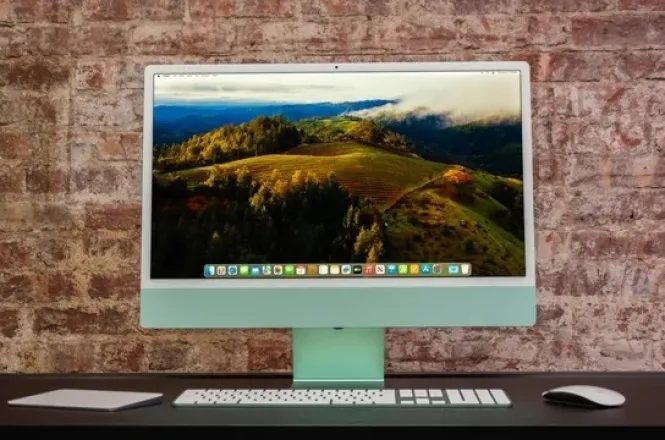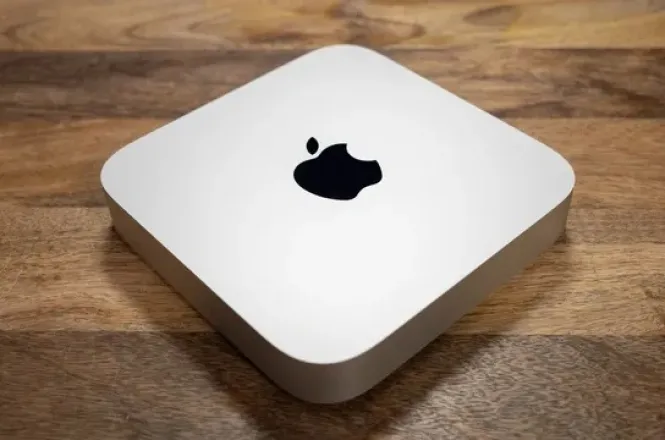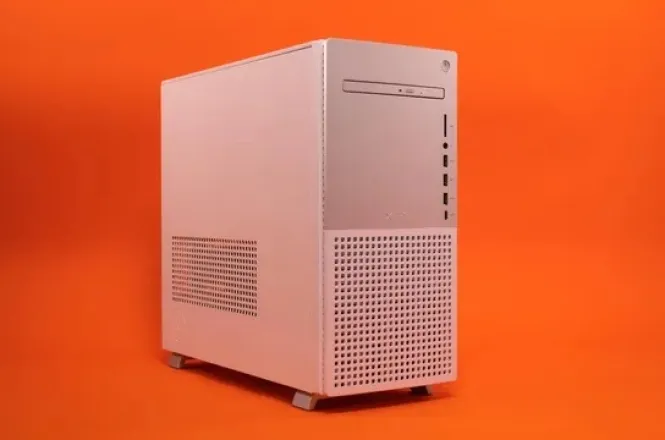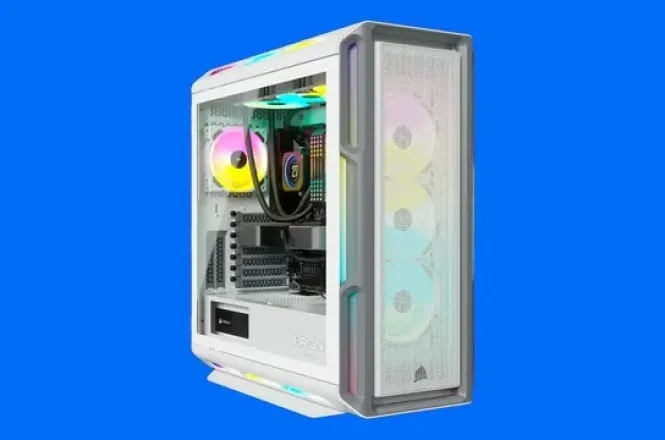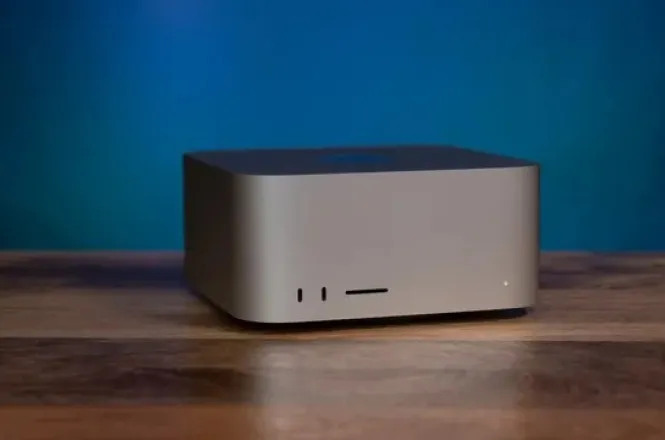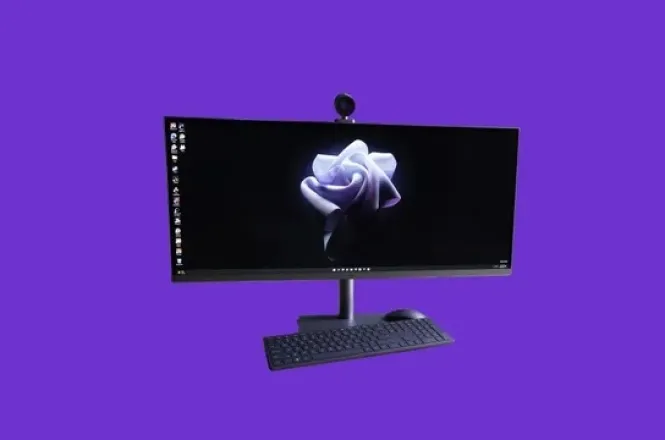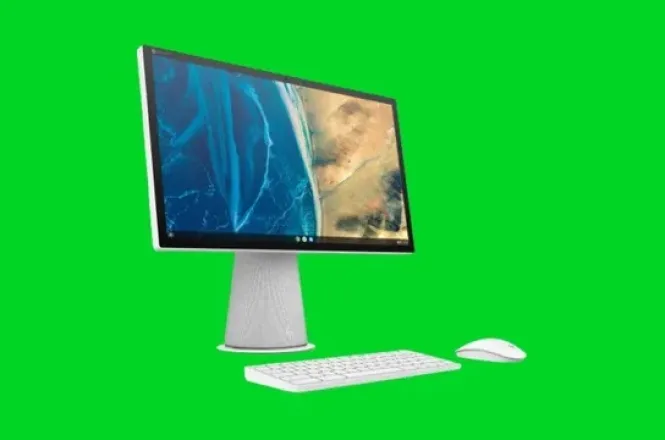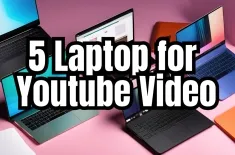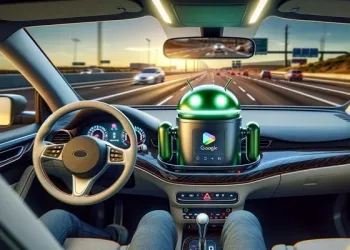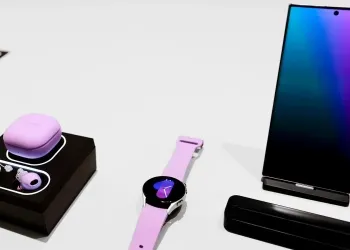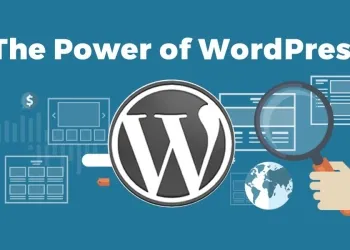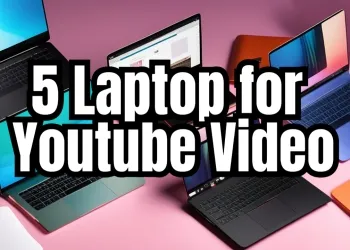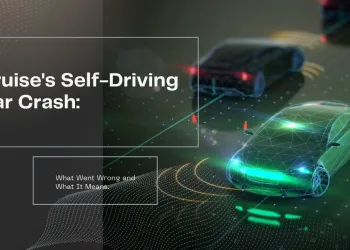These are TechBitBlitz editors’ top picks for best desktop computers (both Macs and Windows PCs), plus advice on what you should look for in your next desktop.
What is the best desktop computer overall?
If you're looking for the top all-in-one desktop for most ordinary blokes and birds, Apple's new M3-powered iMac takes the biscuit. It's an all-singing, all-dancing beauty with a cracking 24-inch high-resolution display built right in, powered by Apple's spanking new M3 processor. This little beastie is a real pearler, churning through anything you throw at it with ease. And if you're after a bit more elbow room than your laptop offers, the 24-inch iMac gives you plenty of space to work and play. Yet, this little marvel is surprisingly nippy to move around the flat, thanks to its compact design and snazzy magnetic power cable. Oh, and did I mention it comes in seven jolly colours, with matching accessories to boot? Blimey, Apple really knows how to tickle the fancy!
Other Desktops for Different Strokes
Now, if you're not fussed on the all-in-one lark and fancy a traditional tower or a smaller machine, I haven't forgotten you. We've got cracking recommendations for those too, whether you're a Windows whizz or a ChromeOS champion.
Hands-on and Tested Recommendations
While laptops tend to hog the limelight here at TechBitBlitz, desktops still strut their stuff in the CNET Labs from time to time. We base a fair few of our current recommendations on tried-and-tested versions we've reviewed in the past. We also dish out general PC configuration advice, even if we haven't specifically tested that exact setup. Trust me, our experience with similar computers means we know what's what. These guidelines should be a right handy guide if you're after the best bang for your buck when building your own custom PC. And of course, we'll keep this "best desktop computer" list spick and span with regular updates.
How We Test Desktops
We evaluate desktops in two steps – a bit like a cracking two-course meal. First up, they get a good grilling in the TechBitBlitz Labs under controlled conditions. We throw all sorts of tests at them, like Geekbench, Cinebench R23, PCMark 10, and 3DMark, to see how their muscles hold up. And if it's a gaming rig, we'll give it a workout with Guardians of the Galaxy, The Rift Breaker, and Shadow of the Tomb Raider.
The second course is all about hands-on experience. Our reviewers use the desktop like they would their own, giving it a thorough test drive. They judge how everything fits together, from the design and features (screen, camera, speakers) to the manufacturer's software. We also consider the price point, looking for where corners might have been cut or upgrades made.
Of course, just like our tastes change, so do the tools we use for testing. As new kit emerges, we update our list of benchmarks and comparison points. If you're curious about the full menu, you can find all the gory details on our "How We Test Computers" page.
So, there you have it – the TechBitBlitz way of putting desktops through their paces! Now, where did I put that cup of tea?
Factors to consider when buying a desktop computer
Right then, mates, let's chinwag about picking the best desktop for your needs. Whether you're a spreadsheet soldier or a graphics guru, there's a PC out there waiting to be your trusty tech sidekick. Buckle up and let's navigate the maze of specs and jargon!
Price: What's Your Budget, Bruv?
For most everyday tasks, you can snag a decent tower PC from Acer, Asus, Dell, or HP for around £400-£500. These bad boys will chug along happily for years, handling web browsing, emails, and even a dab of light gaming. Here's what we recommend for a basic Windows 11 rig:
- Processor (CPU): Intel Core i5 (12th or 13th gen) or AMD Ryzen 5 (5000, 6000, or 7000 series)
- Graphics: Integrated graphics like Intel UHD or Iris, or baseline AMD Radeon (unless you're a gaming fiend)
- RAM: 16GB or more – keeps things zippy!
- Storage: 512GB or bigger NVMe SSD drive – snappy and spacious
- Ports: Plenty of USB 3.1 or 3.2, including USB-C and USB-A (one or two on the front for easy access)
- Wireless: Wi-Fi and Bluetooth – ditch the wires, embrace the freedom!
- Expansion Slot: At least one PCI-E (x16) slot for future upgrades, like a beefier graphics card
Fancy yourself a gamer or a photo/video editing whizz? You'll need to level up the specs and expect to pay between £650-£950 (or even more if you want a bleeding-edge graphics card). Think:
- Graphics card (GPU): Nvidia RTX or AMD Radeon RX – unleash the graphics beast!
- RAM: 16GB or more – multitasking like a boss
- Power supply: 450 watts (or more) – feed the power hog!
Operating System: Windows vs. Mac (and the Odd Chromebox)
Microsoft Windows and Apple's macOS are the main contenders, both doing similar things but in different ways. Unless you need a specific app that only runs on one, go with the one you feel most comfortable with. Most desktops run Windows, while Apple's iMac, Mac Mini, Mac Studio, and Mac Pro use macOS. There's also the odd Chromebox running Google's ChromeOS, which is cheap and easy to use but can't run Windows or Mac software.
Processor: The Brains of the Operation
The CPU is the brainy bit that runs the show. Intel and AMD are the big names in Windows desktops, offering a dizzying array of processors. Head to their websites to pick one that suits your needs. Intel's current lineup is the 13th-gen Core chips, with 14th-gen on the horizon. AMD's latest chip is the Ryzen 7000 series. Generally, the faster the clock speed and the more cores, the better the performance. Macs take a simpler approach, with the Mac Mini sporting an M2 or M2 Pro chip and the new iMac rocking the M3. The Mac Studio gets fancy with either an M2 Max or M2 Ultra, and the Mac Pro is the ultimate powerhouse with the M2 Ultra. Again, more cores often mean better performance.
Graphics: Rendering Reality, One Pixel at a Time
The GPU handles all the visual wizardry, displaying what you see and speeding up graphics-heavy tasks (and even AI stuff these days). Macs have the GPU integrated with the M2 and M3 processors. For Windows desktops, there are two types: integrated (iGPU) and discrete (dGPU). iGPUs are built into the CPU, while dGPUs are separate chips with dedicated memory (VRAM) for extra oomph.
iGPUs are great for smaller PCs like all-in-ones and SFF rigs but aren't as powerful as dGPUs. Some games and creative software won't even run without a dGPU or enough VRAM. But for everyday tasks like browsing, streaming, and basic productivity stuff, an iGPU will do just fine. If you're a video editor, gamer, streamer, designer, or anything else that demands graphics muscle, you'll need a dGPU. Nvidia and AMD are the main players, with Intel offering some Xe-branded iGPU options.
Memory: Keeping Things Ticking Over
For keeping your mind (the computer's, that is) working tip-top, we recommend at least 16GB of RAM. That's where it stores all the open tabs, spreadsheets, and games you're juggling at once. If it only has 8GB, things can get sluggish, like trying to do the washing-up with one hand behind your back. Imagine having to swap plates back and forth between the sink and a muddy puddle – that's what happens when the RAM fills up and starts using the slower storage drive.
Tower PCs usually have extra slots for adding more RAM like topping up your toolbox, but all-in-ones and those smaller fellas might not. And even if they do, reaching those slots can be like trying to untangle Christmas lights after a sherry-fuelled party.
Storage
You might find budget PCs clinging to clunky hard drives like last year's Christmas cake, but fancy ones and gamers have mostly gone solid-state (SSD) now. They're like switching from a clapped-out banger to a sprightly little sports car – much faster! Cheaper ones can still be a bit sluggish, like that old banger trying to climb a hill, especially if you only have 8GB of RAM and it starts swapping data back and forth.
Get the biggest one you can afford, but 512GB should be enough for most folks. If you're a film buff or a gamer storing epic libraries, aim for 1TB or more. Tower PCs usually have room for adding another drive internally, like building an extension onto your garage. All-in-ones and those smaller ones might need an external drive or that fancy cloud storage to keep everything tidy.
Display
All-in-ones are neat space-savers, with the screen and all the bits and bobs tucked behind it. But you give up some upgrade options for that convenience. As for the screen itself, aim for a big one with a decent resolution. Think of it like getting a huge telly for the telly room – the bigger and sharper, the better! Here's a rough guide:
- 24 inches with 1,920x1,080 pixels (that's 2K, or 1080p)
- 27 inches with 2,560x1,440 pixels (1440p)
- 32 inches with 3,840x2,160 pixels (the granddaddy, 4K)
Best desktop computers of 2023
1. Best Overall Desktop Apple iMac M3 (2023)
The 24-inch iMac is a right corker for a family computer, or if you're after something besides a laptop you can lug from room to room. It's nippy enough to fit in snug spaces, like that nook in the kitchen, but it's not half bad for spreading out your work, watching a film, or even a bit of casual gaming. And with the recent M3 upgrade, it's a proper little powerhouse for making bits and bobs or having a go at a game or two.
The iMac starts at £1,299 for a set-up with an M3 chip packing an eight-core CPU (four nippy bits for grunt and four for efficiency), an eight-core GPU for graphics, and a 16-core Neural Engine that's good for all sorts of clever tricks. This starter model also comes with 8GB of RAM, a 256GB SSD for storage, and two Thunderbolt USB-C ports for plugging things in. You get Apple's Magic Keyboard and Magic Mouse thrown in too, which is a nice bonus. There's also a souped-up M3 with two extra GPU cores if you fancy a bit more oomph, and you can add more RAM and SSD space if you need it.
2. Best Cheap Desktop Alternative to a MacBook or iMac | Apple Mac Mini
Ah, the Mac Mini! A trusty little fella that's been around since 2005, even before the first MacBook took its wobbly first steps. All these years on, it's still got the same cheeky grin and appeals to much the same crowd. Unlike its flashy laptop cousins or the mighty iMac, the Mini's happy to stay behind the scenes, tucked away in a corner, doing its job without a fuss. You choose the monitor, you choose the keyboard, the Mini just gets down to business.
And at a sprightly £649 starting price, it's still the cheapest way to get your Mac fix by a country mile. You'll often find it lurking at a cheeky discount on Amazon and the like, while the closest pricewise, the ancient M1 MacBook Air from 2020, sets you back a cool £999. If you fancy a bit more oomph, the M2 Pro Mini starts at £1,299, but for most folks, the standard M2 is plenty powerful enough.
So, if you're after a reliable, affordable Mac that doesn't mind blending into the background, the Mini's your man (or, I suppose, machine). It's a classic for a reason, and don't let its size fool you, it's got a right punch under the bonnet. Cheers, Mini!
3. Best Mainstream Desktop for Gaming | Dell XPS 8960 Desktop
While all-in-ones are right snazzy for their convenience, fiddling with their insides is often a right nightmare, if not impossible. That's where Dell's XPS 8960 Desktop comes in like a knight in shining armour. This little beauty is compact and quiet enough to sit happily on your desk, even in a pokey workspace, but don't let its size fool you. It can be kitted out with a 13th-gen Core i9 processor, an Nvidia GeForce RTX 4080 graphics card, enough memory to keep even the most RAM-hungry programmes happy (up to 32GB) and a whopping 3TB of storage, with plenty of room inside for more if you get a bit storage-happy later on.
And if your needs are fairly modest now but you're dreaming big for the future, the base XPS 8960 starts at a decent £1,400 with RTX graphics, and often gets a bit of a price cut in the sales. Just a tip, though, if you're planning on tinkering with its insides down the line, it's worth splashing out a bit extra for the 750- or 1,000-watt power supply. Trust me, you'll thank yourself later!
So there you have it, mate. Dell's XPS 8960 Desktop: compact, quiet, and with the potential to be a real powerhouse if you treat it right. Now, go forth and conquer your digital tasks without worrying about cramped workspaces or fiddly upgrades!
4. Best Highly Customizable Gaming PC | Origin PC 5000T
If the prebuilt gaming desktop world leaves you feeling like a hamster on a wheel – stuck with limited choices – then fear not! Taking the custom build route is like cracking open a KitKat and savouring each delectable layer to create your personal masterpiece.
Sure, fully decking out a bespoke rig can leave your wallet weeping like a willow on a rainy day. But who needs everything maxed out, even for slaying dragons and piloting spaceships? You can craft a satisfyingly powerful machine for roughly half the price of those monster $5,000-plus systems we test.
Origin PC? Now, they know a thing or two about building sturdy, reliable rigs. Forget bargain-basement offerings – you'll be able to cook up something you love at a price you can swallow. Their Neuron range starts around a cheeky £2,000, with the top-tier Genesis line kicking off at roughly double that. Fancy a pre-configured Genesis 5000T? Be prepared to loosen your purse strings to the tune of £4,620. But for that, you get a beefy Core i9-13900K processor, a whopping 64GB of RAM, and a GeForce RTX 4090 graphics card – enough firepower to turn even the most demanding games into pixelated mush.
So, whether you're a pixel-pushing pro or a casual weekend warrior, building your own PC gives you the freedom to customise it to your heart's content. No more settling for someone else's idea of "perfect." Just pure, unadulterated tech-tweaking joy. Just remember, even a custom build needs a budget, so plan wisely and enjoy the process!
5. Best Mainstream Mac Desktop | Apple Mac Studio
The Mac Pro might be the kingpin of Apple's computer castle, but at a princely £6,999, it's out of reach for most mere mortals. That's where the Mac Studio strides in, offering top-notch performance at a significantly more down-to-earth price tag – starting at a cool £1,999.
Even that baseline model packs a punch with Apple's M2 Max chip, 32GB of RAM, and a generous 512GB SSD. Fancy a bit more oomph? For £3,999, you can upgrade to the beefier M2 Ultra chip, double the RAM, and double the SSD space.
Think of it as a Mac Mini on steroids, perfect for anyone who needs muscle for creative work without splurging on the Mac Pro. Animation, graphics, video editing, audio editing – the Mac Studio tackles it all with aplomb.
So, if you're a creative pro looking for a powerhouse without breaking the bank, the Mac Studio is your knight in shining armour. It's not quite the Excalibur of the Mac world, but for its price, it's a mighty fine blade nonetheless.
There you have it, mate! The Mac Studio: a budget-friendly beast for all your creative endeavours. Now, go forth and conquer!
6. Best Big-screen Desktop | HP Envy 34 All-in-One PC
With both Apple and Microsoft chucking in the towel on their bigger all-in-one desktops, the HP Envy 34 AIO stands pretty much alone as a premium pick in that class. No wonder then, it's almost the default choice by default, eh?
It's not a bad kit, mind you. Nice 34-inch display, tick. Handy features like a magnetic webcam and Qi charging pad, tick. Though, be warned, you're paying for the posh looks, not the raw grunt. We tested an earlier model last year and liked it well enough. It certainly feels like a top-notch choice for a home or traditional office where you need a lot of screen in a bit of space.
Just mind the specs, mate. Both models are a generation behind the latest Intel chips, running on either 12th-gen Core i5 or i7. The i5 comes with mobile GTX graphics, good enough for everyday tasks. The i7 ups the ante with a more capable, though still mobile, RTX 3060 GPU for creative work and a bit of light gaming. Officially, the 12th-gen model sets you back £2,000, but keep an eye out for those sneaky sales that knock hundreds off the price.
So, there you have it. The HP Envy 34 AIO: not the fastest on the block, but the king of the big-screen jungle now that the others have scarpered. If you need a bit of space-saving screen real estate and don't mind paying for the privilege, it's worth a gander. Just don't expect it to crunch through spreadsheets like a Formula One car, eh?
7. Best All-in-One Desktop for Tight Budgets | HP Chromebase AiO 22
Cracking little all-in-one desktops make a right good job of serving as the family tech hub. HP's Chromebase takes things a step further, pairing the all-in-one goodness with the straightforward and secure Chrome OS – the same one powering those Chromebooks your nippers likely use at school.
Imagine a whopper version of Google's Nest Hub smart display, sporting a 21.5-inch touchscreen perched on a grey, fabric-covered base. That's pretty much the Chromebase, and just like the Hub, it's got Google Assistant built in, ready to take your orders. Under the bonnet, you'll find up to an Intel Core i3 processor, 16GB of memory at most, and a speedy 256GB SSD.
And here's the real peach: the full-HD display flips up on its side, perfect for watching those portrait-mode videos, whipping up culinary delights from recipes, or scrolling through your favourite websites without needing to twist your neck like a contortionist. Not a bad trick, eh?
So, if you're looking for a neat and tidy device to keep the whole family digitally entertained and connected, the HP Chromebase is definitely worth a gander. It's straightforward, secure, and adaptable, just like a good cuppa and a biscuit on a rainy afternoon. Cheerio!
